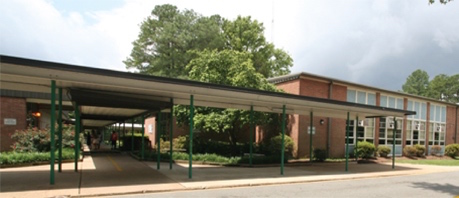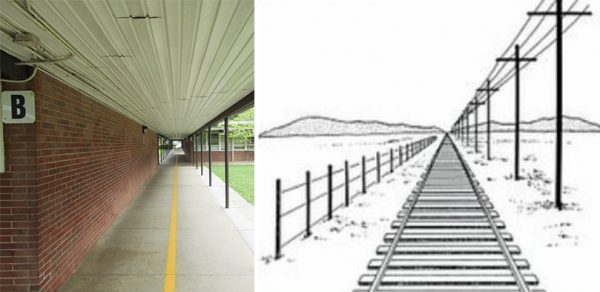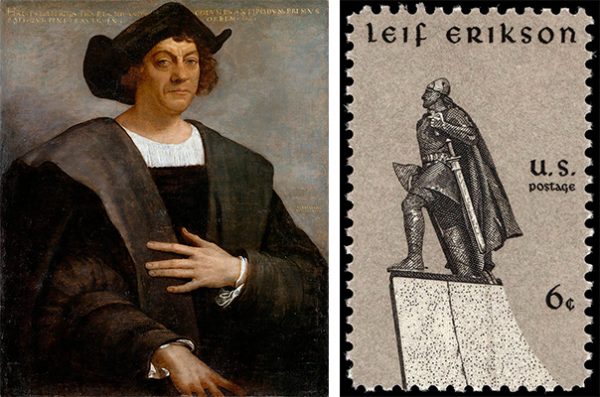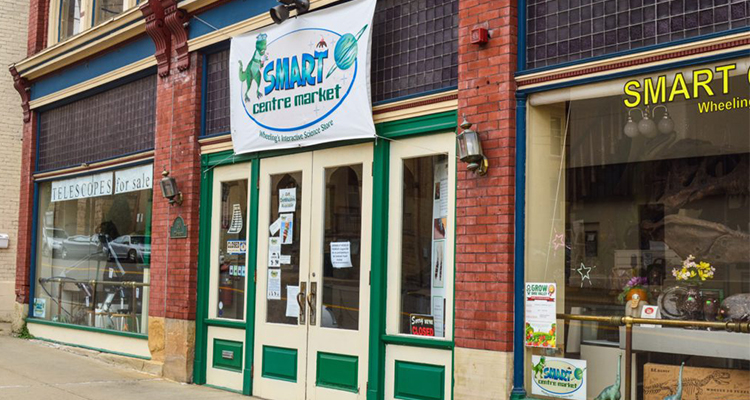 Fifty years ago this month, I was just another sixth-grader at Chamberlayne Elementary School in Henrico County, just outside of Richmond, Virginia (East Virginia for geographical symmetry). I spent my days quietly reading through the high school science and mathematics textbooks that were conveniently being stored in a low bookcase just to my left within easy arm’s length.
Fifty years ago this month, I was just another sixth-grader at Chamberlayne Elementary School in Henrico County, just outside of Richmond, Virginia (East Virginia for geographical symmetry). I spent my days quietly reading through the high school science and mathematics textbooks that were conveniently being stored in a low bookcase just to my left within easy arm’s length.
I never wondered about it then, but I do now. Why was my seat where it was in the overall geometry of my classroom? Mine was the only seat that was adjacent to a wide array of high school textbooks on science and mathematics. In fact, mine was the only seat that was adjacent to anything other than walls, windows and other students. The other students sitting in the row of desks with me on the far left of the class had empty shelves or storage boxes of art supplies. Why was I where I was? I never questioned the nameless gift horse for fear that someone would find out that I was making out like an educational bandit and take this wonderful oversight away.
The agreement with my teacher on the first day of the sixth grade was simple and elegant — if and when I finished my seat work early, I had access to any reading materials within my arm’s reach without getting up out of my seat. I could neither talk during that time nor cause any disruptions to the rest of the students still finishing up their work. As long as I followed these simple rules, all would stay as it was — “science research perfection.”
I would race through my work with lightning speed, making my pencil blur across the worksheet pages, counting down the seconds to when I could turn over my work, face down on the desktop and reach for one of the hardback science books containing my many color-coded and annotated bookmarks allowing me to start where I left off the prior work period. I would read ahead in all my classes — at home — to get a jump start on the next day’s “in-classtime” reading assignments. I felt a twinge of sadness for the other students who finished early. They must have had zero bargaining and negotiating skills to agree to a far lesser deal with the teacher where they only got to put their heads down on their desktops. I felt sorry for them, but not sorry enough to suggest that we trade places. Not a chance.
To say that I stayed out of trouble was an understatement. I was just not the troublesome sort of kid. I was the “good kid,” the “goody-two-shoes kid,” the “teacher’s pet.” I overheard all these names in whispers and did not care. It was true, all of it, and I embraced it. I liked school, I liked my teachers, and usually, I liked most of my fellow students — usually.
I was the “good kid,” the “goody-two-shoes kid,” the “teacher’s pet.” I overheard all these names in whispers and did not care.
So it was like a bomb dropping into my classroom when the classroom speaker box activated with a soft buzz one mid-April Friday afternoon. We all looked up from our seat work, a few heads poked up from their nests of folded arms and latticed fingers, I put down the chemistry book, our principal cleared his voice and said, “I am sorry to interrupt; please send Mr. Robert Edward Strong to my office at once — thank you.”
Every single other person in my classroom including the teacher in unison did that weird non-word utterance “uuuhhhh-oooohhhh” that implies, as a classmate of mine once said, “whatever you did, it was bad, real bad. When they (grown-ups) called you by your first, middle and last name, they must have caught you red-handed, and now you are going to pay the price — poor you, it’s been nice knowing ya.” I heard a nearby whisper directed to me “what did you do?” I closed my eyes and slowly shook my head.
I had never been to THE PRINCIPAL’S OFFICE, at least not this year. There was that one time … But, that was in the fourth grade. Eventually, I was exonerated of my school-crime, and it turned out pretty good in the end — at least I thought it did. Principals, they don’t keep educational grudges for two years, do they? Somewhere in the back of my mind swam up the phrase, “revenge is a dish best served cold.” Meaning, don’t strike back at once — wait a while, strike back at them when they least expect it — for maximum vengeful effect. No, that could not be it. Well, I guess I will soon find out.
A couple of students I knew that occasionally crossed into my circle of friends, made occasional pilgrimages to the office of the principal. It was never good for them; it was never neutral; it was always bad. My mind raced over everything I had done or had thought of doing. My mind was a blank — what had I done? Just a few moments had gone by. I opened my eyes. Everyone was staring at me.
My teacher was standing to my right, “Mr. Strong, the principal is waiting for you, hurry along.” I know now that my teacher knew what this was about, but was not letting on. My classmates, on the other hand, were eager to witness the dead-man-walking, with a drag-footed stroll of a lamb readied for the dreaded slaughterhouse of the principal’s office. Would it be the “paddle”? Would it be the feared call to the parents of the accused criminal? Everyone knew the parents call was the far worse of the two outcomes. Or, maybe, just maybe … it would be both?
I walked to the open door letting in the thick warm spring air filled with blooming fragrances floating on a slight breeze. I felt two dozen pairs of eyes drilling holes in my spine but somehow I turned right and headed for the corrugated-roofed sidewalk backbone that connected all the buildings of Chamberlayne Elementary School in a staggered pattern all the way to the principal’s office at the far end on the right. The principal’s office, my final destination. The end goal to this that felt like my final journey.

I wanted to run — but not toward the principal’s office. My legs felt heavy; my feet felt heavier still. This was the only thing that kept me from bolting and running. I would look comical running in place in super slow motion, and besides, where would I go?
And then it struck me, wait a minute, what did I do anyway? That was it; there has been a mistake. We would get this straightened out; we would all get a good laugh soon. The principal would understand his mistake and explain to my teacher and classmates that I am not a felonious criminal, a delinquent miscreant and that this was all a simple misunderstanding. A simple case of mistaken identity.
I was passing the library building on my left now. Soon, without looking back, I knew I was now entering into the “observation-shadow” of my classroom and my friends and teacher. I was now completely alone with my thoughts — with no other observers watching my painfully slow progress. I kept walking; the office building looked like a distant speck on the horizon. The sidewalk, roof and metal pillars acting like an optical illusion in perspective … where parallel lines appeared from my location within the structure to be converging at the vanishing point (the office building), a vast, near-infinite distance away.

Far too soon, I reached that infinite point. I was at the office building door with the rectangular mosaic panels of shades-of-blue square tiles. I passed the office building and these blue mosaic panels with hues-of-blue (as if taken from the pallet used by Vincent Van Gogh for his masterpiece “Starry Night Over the Rhône”) at least four times a day for nearly three years. Somewhere around 2,000 times I looked at these panels, and I never found any discernable patterns. I checked again, scanning for any obvious patterns — this time, I was trying to find an excuse to not go in.


I opened the door and cautiously stepped into the lobby. The secretary said, “Oh, there you are. The principal is waiting for you in his office …” and motioned in the direction of the of “the room.” I had been here before, just a couple of times, but never alone. The previous times had been with my parents acting in the roles of both offense and defense for my visits. I peered around the doorjamb, there he was, the principal, scanning the contents of a thick manila folder. He looked up, and I ducked back.
His voice boomed, “Come in, come in.” I looked back around the doorjamb. “… Mr. Strong, take a seat.” He was pointing to a chair, and the principal was beaming. I slowly walked over, and I lowered myself into the chair in front of his desk watching him. The chair felt big and open; I felt small and exposed. The principal got up from his chair, walked around the desk corner, and sat or leaned on or against the corner of his desk. “Mr. Strong, we have not talked much in our three years here at Chamberlayne. But, I have been closely watching you.” He was waving a folded piece of paper, a tri-fold brochure. As he talked, I squirmed.
“That stunt you pulled in fourth grade — refusing to write a paper on Christopher Columbus for Columbus Day. I must say, it really took me aback at first. Made me mad, the insubordination of it all, and yet you stuck to your guns. At the urging of your parents, we read your report; I have a copy of it here.” He opened up the folder, thick with various papers, and picked up a yellow transparent plastic-sleeved report my mother had typed. I could just read the title: Why We Should Celebrate Leif Erikson on Columbus Day. He laughed and tossed the plastic-sleeved copy back in the thick folder and closed it … I noticed that my name “STRONG, Robert E.” was printed on the tab of that folder.
He continued, “I haven’t yet been able to convince any other elementary school principals in Henrico County to join us in observing our annual Erikson Day Celebrations here at Chamberlayne, but at least they have stopped laughing — mostly.”

What was going on? The principal was laughing now. When I was in the fourth grade — not so much. Exactly why was I here?
“Then, Mr. Strong, there was the recent Science Fair Incident, that sure took us all by surprise. You showed up with not one or two, but three different projects in three different categories! Any one of those three projects would have easily won first place in their respective categories and the whole school fair. But, you told the judges that you refused three prizes, you told the judges” … He paused, opened the folder again, sorted through the pages and pulled out a sheet and read, “You said, this is a quote now … ‘I came to the science fair for the science — not to get a prize. Please give two of my prizes to someone else — one prize will do just fine.’”
The principal leaned forward, “The judges, myself and two other students and their parents thought that was a very classy thing for you to do.”
We will pause here. It’s a good safe place to ask: What exactly is happening in the principal’s office? Why was Robert called to the principal’s office? And … what does all this have to do with starting the SMART-Center in Wheeling, West Virginia, 25 years later?
Stay tuned to Weelunk for “A View From the Moon: The SMART-Center Turns 25 — 50 Years Ago (Part 2),” where these questions will be answered.
• Robert E. Strong received a bachelor of arts degree in physics with minors in mathematics and philosophy and has a master’s degree in space studies. Robert taught secondary school math and science in Benin, West Africa, (Peace Corps volunteer) and in American Samoa. He worked as a physicist in a research laboratory. Robert is president of the Near Earth Object Foundation dedicated to educating the general public about Near Earth Objects and providing public StarWatches. Robert and his wife Libby started the SMART-Center in 1994, a hub for science- and math-related activities for area schools, educators and the community. They also operate the SMART Centre Market — an interactive hands-on science store in Wheeling, featuring Orion telescopes, science toys and Kirke’s ice cream.


